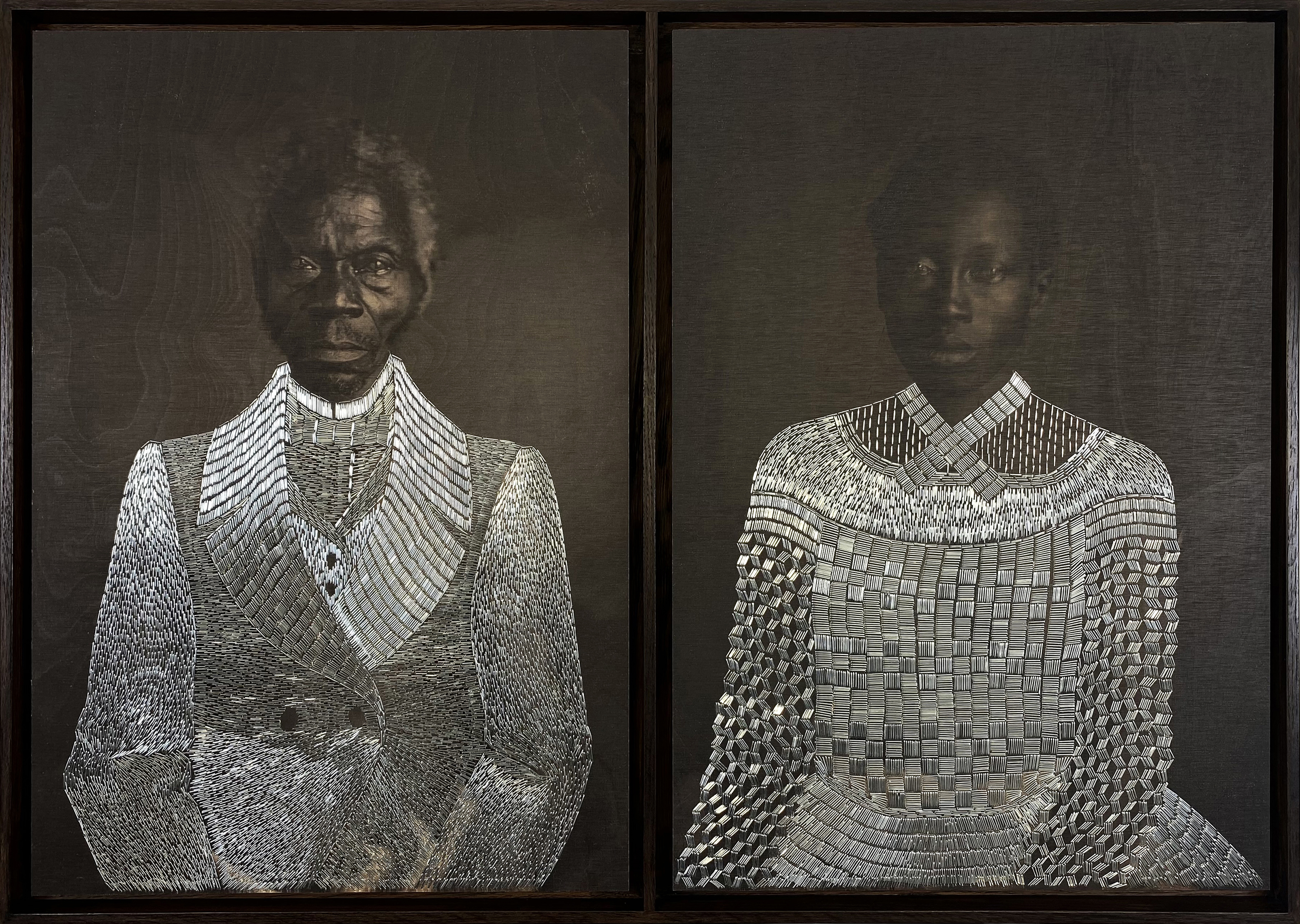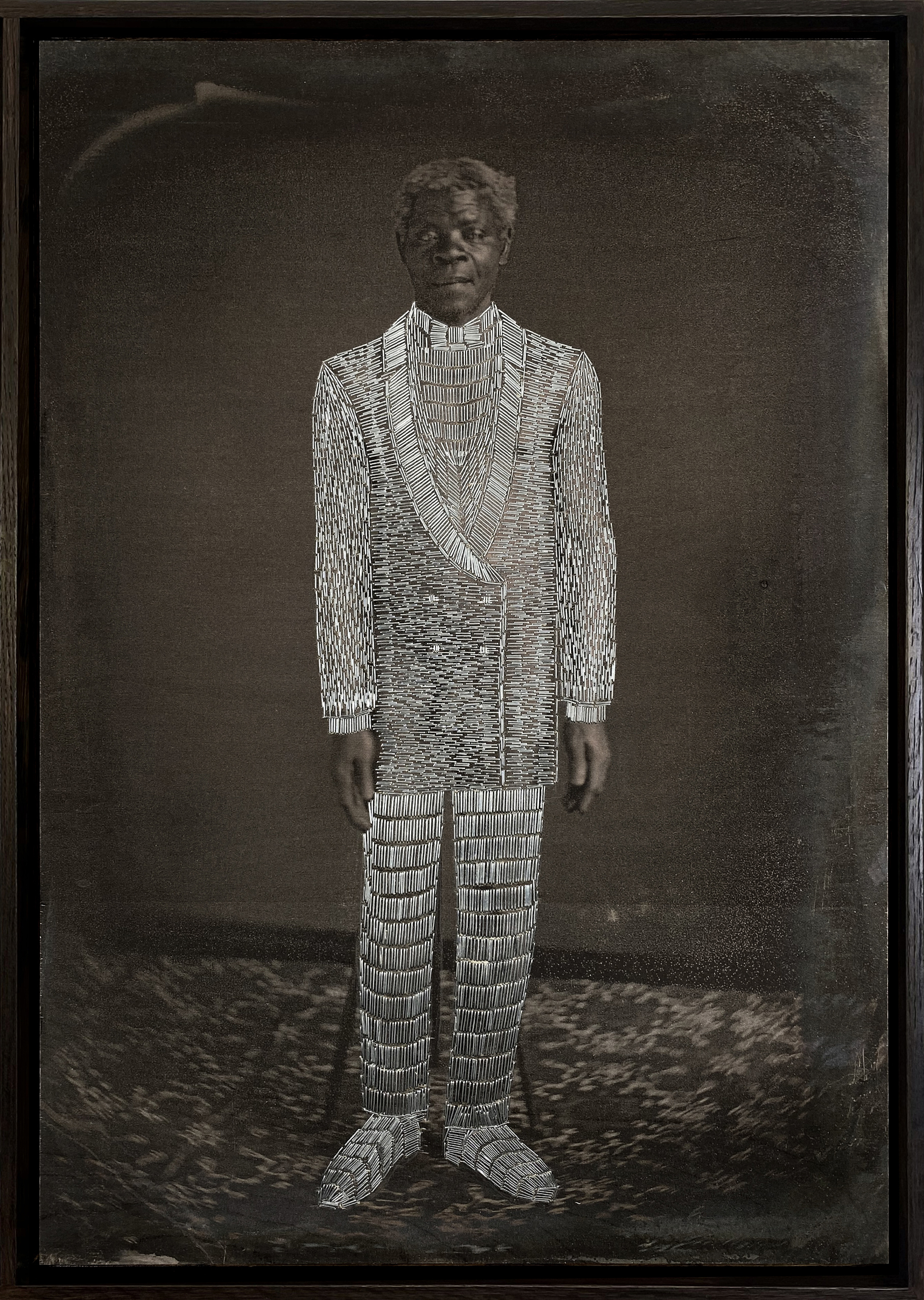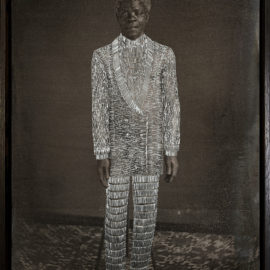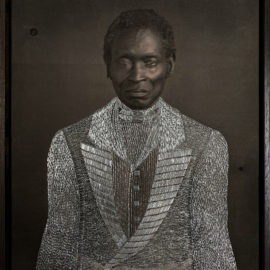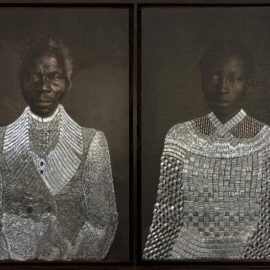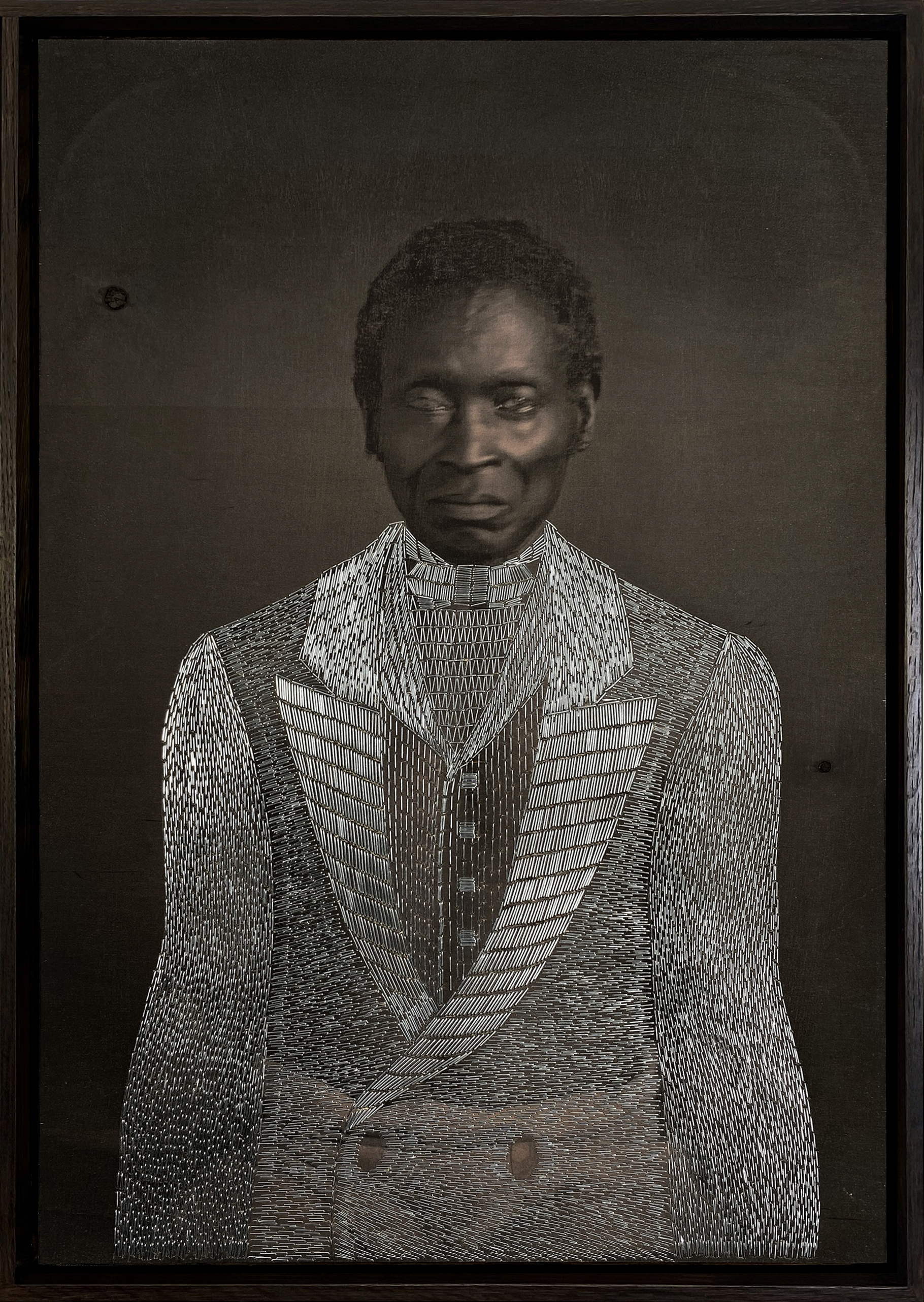Sasha Huber redresses the haunting daguerreotypes of enslaved people in an act of healing colonial and historical traumas
Sasha Huber, Tailoring Freedom – Jem, 2022. Metal staples on photograph on wood, 49 x 69 cm. Courtesy the artist. Commissioned by The Power Plant, Toronto; Autograph, London; Turku Art Museum, Finland; and Kunstinstituut Melly, Rotterdam, 2022. Original mage courtesy the Peabody Museum of Archaeology and Ethnology, Harvard University, 5-10/53046. © Sasha Huber.
Source:
